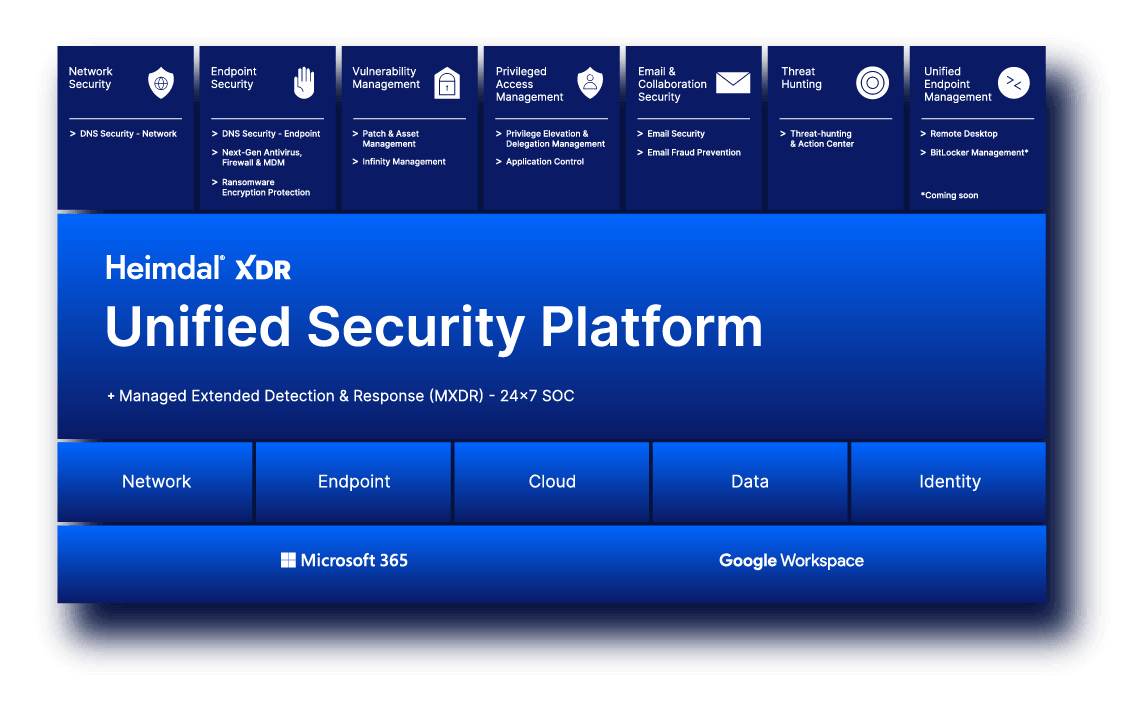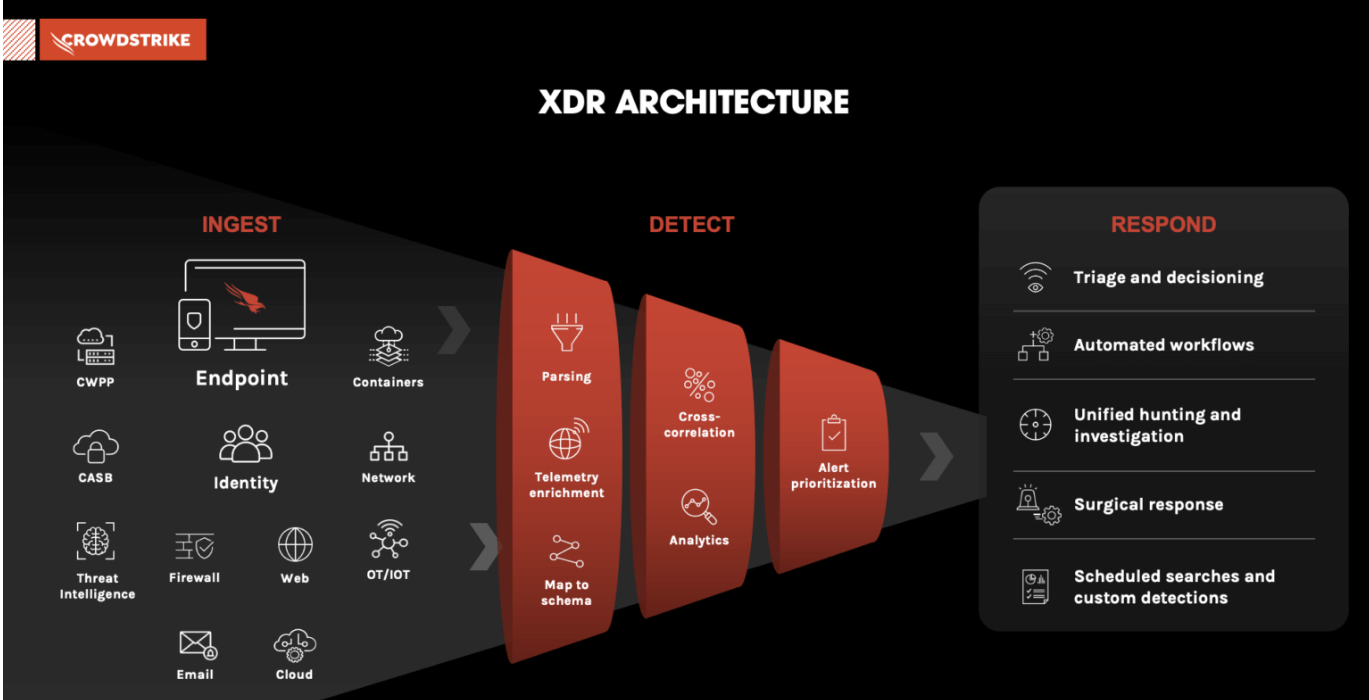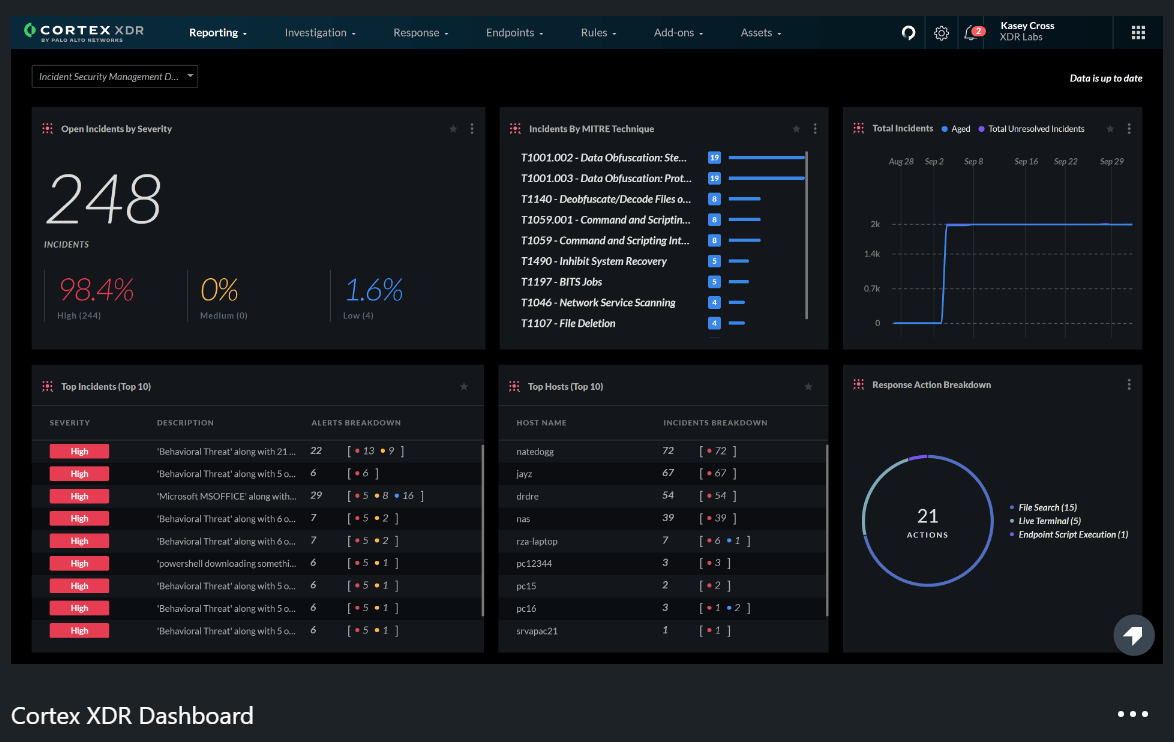There’s growing evidence that organizations are consolidating their cybersecurity tools. One survey found that 60% of companies are looking to reduce the number of point solutions they use. And it’s not just about saving money – the top driver was in fact about improving usability (for 23%).
Cybersecurity platforms are meeting this demand. By bringing most – if not all – of your cybersecurity tools into one environment, you can consolidate your activities into one, robust platform.
In this article, you’ll learn about 11 of the best cybersecurity platforms currently available.
What Is a Cybersecurity Platform?
A cybersecurity platform is simply an environment where all the security tools an organization would need are available. At present, most businesses use a multitude of ‘point solutions’ – these are tools from different vendors that are built specifically to address one aspect of cybersecurity. By contrast, cybersecurity platform providers bring all those solutions into one place.
For example, you could use threat hunting tools, patch management tools and endpoint management tools from different vendors. Or, you could choose a vendor whose solution includes all those tools and more, in one place.
There are many advantages to cybersecurity platforms:
- They reduce your attack surface;
- It’s much easier for analysts to use one platform compared to dozens of tools;
- There’s a shorter learning curve;
- Having one platform is much easier to integrate with your IT stack, compared to multiple tools;
- You require fewer security professionals to do the same amount of work (which is helpful, given the shortage of skilled workers on the market).
The concept of cybersecurity platforms is relatively new, and there is a certain degree of controversy surrounding the topic. Some industry players, such as Palo Alto Networks’ CEO Nikesh Arora, have claimed that point solutions will no longer exist in future (in early 2024, he claimed they’d disappear in just five years’ time). Others believe point solutions will always exist as new threats emerge.
What to Consider When Looking for a Cybersecurity Platform
As mentioned above, the cybersecurity platform concept is relatively new. There is a certain degree of hype around this concept – and many vendors are claiming they provide platforms, when in fact they offer limited sets of point solutions.
Here are a few questions to consider when choosing a cybersecurity platform:
- Does the platform include all essential cybersecurity tools?
A cybersecurity platform should give you all the tools you need to complete essential cybersecurity tasks, per the NIST’s five core functions: Identify, Protect, Detect, Respond and Recover. If it cannot perform all these tasks, it is not a true cybersecurity platform.
- Is it future proof?
To be successful, cybersecurity platforms need to be flexible – able to add new tools as new threats emerge.
- Is it robust?
Some cybersecurity platforms have been built through mergers and acquisitions (i.e. a threat hunting company buys an EDR solution, and bundles both products together), while others are built entirely by one company. Unsurprisingly, the latter tend to be more robust.
- Is it open?
No cybersecurity platform could do every possible task. It’s therefore important to choose platforms that have APIs which allow them to pull in data from third party point solutions you require.
- Is it easier to use?
A major reason to choose cybersecurity platforms is that they make your life easier – everything’s in one place. It’s really valuable to use free trials of these platforms and decide if they are actually more user friendly than your existing setup.
11 Cybersecurity Platforms That Stand Out on the Market
The market for cybersecurity platforms is still emerging, and there is only a fairly limited number of true platform providers. Here, we’ve listed 12 of the leaders in this field.
1. Heimdal XDR (+MXDR)

Heimdal XDR is a unified security platform that provides a comprehensive suite of security tools. In addition to the five core NIST functions (Identify, Protect, Detect, Respond and Recover), it also provides solutions for Privileged Access Management (PAM), email and collaboration security, network security, threat hunting, and more. It also allows you to import data to its dashboards via APIs from third party point solutions.
I like the online management, the complete package of all security applications needed, all-in-one place.
2. CrowdStrike Falcon

CrowdStrike Falcon is another robust solution that delivers on most of the NIST’s core functions. It is perhaps best known for its unique use of AI in cybersecurity. Rather than scanning endpoints, data or emails, it instead analyzes behavior. The idea is that behavior patterns are the clearest indicator of cybercrime.
It is a robust cloud-based endpoint protection tool that offers excellent features and protects our data from unknown threats.
3. Palo Alto Networks Cortex XDR

Cortex XDR provides many of the core functions of a cybersecurity platform, including endpoint protection, detection and response. The platform is particularly focused on detection and response at present – it provides fewer additional tools compared to some of its competitors.
Cortex XDR is a fantastic utility provided by Palo Alto Networks. It has a vibrant interface and is easy to use. It offers unique features like Anti-Exploit protection along with Anti-Malware protection.
You might like: Sophos vs. Palo Alto: Intercept X vs. Cortex XDR
4. Mandiant Advantage
Mandiant Advantage is a rather different proposition to the other cybersecurity platforms listed here. While the company (now a Google subsidiary) does have specific tools for things like attack surface management or threat monitoring, it can be thought of as more like a cybersecurity ‘mesh’.
Mandiant provides intelligence to its customers, and they can then use point solutions to address issues. Since it is a relatively product-agnostic solution, Mandiant isn’t a full cybersecurity platform, but it allows you to operate in a similar way.
It is a pretty robust solution which helps you find detailed information about threat actors and tactics used by them.
5. Microsoft Defender for Endpoint
With the resources of Microsoft behind it, Defender for Endpoint offers most of the tools that organizations would need from a cybersecurity platform. Defender is particularly valuable for organizations that primarily operate in Microsoft’s world – it may be less relevant for firms whose tech stack is less reliant on one platform.
This is a solution [that is] perfectly compatible with the Windows operating system. This makes it easy to configure and manage for people familiar with Microsoft tools.
6. Trellix Helix Connect
Hellix Connect is primarily an endpoint detection and response platform. But it is also able to integrate information from 230 third party point solution vendors. This means you can go some way to having a cybersecurity platform (although you still need to manage all your additional point solutions separately).
Helix has been a great product. It provided quite a bit of flexibility on tuning and integration. We onboarded a large volume of data sources.
7. SentinelOne Singularity XDR

The Singularity XDR platform from SentinelOne ingests data from an enormous range of endpoints and sources. It then uses AI to identify threats in the cloud, on endpoints, or identity & access. However, it does not offer comprehensive Recover functions within the platform (but you can connect to many tools through its Singularity Marketplace), so cannot be considered a complete cybersecurity platform just yet.
Easy to understand and use. It detects threats and provides visibility over the network. It also does threat hunting. Implementing it with other security devices is also feasible.
Read next: CrowdStrike vs. SentinelOne
8. Huntress
Aimed specifically at small and medium-sized businesses, Huntress offers managed EDR and covers all the core functions of a cybersecurity platform. They also offer security awareness training. The platform is somewhat limited when it comes to additional security tools, however, so you may still need point solutions from third-party vendors.
We have peace of mind that someone is looking at everything 24/7, and the portal gives us all the information we need.
9. Qualys Enterprise TruRisk
The Enterprise Trurisk platform helps cybersecurity teams to identify their most risky apps and configurations from across their environment, and resolve problems fast. It also helps with patch management and compliance. Although it is not yet a complete cybersecurity platform, Enterprise TruRisk offers many of the features businesses will need.
Enabled us to manage, view, and control all devices and endpoints in our organizations and sort them in various ways, push scripts selectively based on group, and generally keep things organized.
10. Trend Micro Trend Vision One
Vision One from Trend Micro is one of the more comprehensive cybersecurity platforms. Users get access to an enormous number of tools, including endpoint security, network security, hybrid cloud security, email and collaboration tools, and other security services. It is, however, criticized for its confusing token-based credits system (you pay per endpoint, app or tool, rather than a predictable monthly fee).
Personally I consider that Trend Micro Vision One has a lot of functionalities that we can access easily, allowing us to have a lot of possibilities to view and monitor the cyber risk and the surface attack.
Suggested: Trend Micro Vision One Vs SentinelOne Singularity XDR
11. Sophos Intercept X
Also specializing in endpoint security, Intercept X from Sophos allows you to hunt, investigate and respond to suspicious activity. It has many of the features you’d expect from a cybersecurity platform, although it’s lacking in tools beyond EDR.
Overall experience of using Intercept X is [that it’s] worth the price. It endlessly protects our organization from the threats. It automatically detects and prioritize potential threats [so we can] quickly see where to focus and know which machines may be impacted.
Related: SentinelOne vs. Sophos: Singularity XDR or Intercept X?
Cybersecurity Platforms: An Emerging Market
As this list shows, there are many vendors who are now moving towards a cybersecurity platform approach. While there are only a handful that are genuine platforms – able to provide a wide range of point solutions in one place – there is clearly a consolidation trend.
With its complete range of tools, Heimdal is one of few truly comprehensive cybersecurity platforms on the market at present. Intrigued to see how it can help you? Discover the platform with a personalized demo today.
Frequently Asked Questions About Cybersecurity Platforms
We’ve answered your common cybersecurity platform FAQs.
Is an XDR the same as a cybersecurity platform?
No. While an XDR does many of the same tasks that a cybersecurity platform does, it is more limited. XDRs focus on detecting threats across your network (including on devices, endpoints, and user accounts) and resolving them. A cybersecurity platform does this too, but it also gives you many other tools which focus on different areas of security – be that patch & asset management, email fraud prevention, or remote desktop software.
Who should use a cybersecurity platform?
Cybersecurity platforms are an ideal solution for managed service providers, SOCs at large businesses, and IT teams at SMEs. Essentially, they’re suitable for anyone who’s responsible for cybersecurity. They give you all the tools you need to keep data secure, in a single place.
Which is the best cybersecurity platform?
We might be biased, but we are confident that Heimdal XDR is the most complete, robust, and easy to use cybersecurity platform on the market today. No other tool offers the range of tools, the product pipeline, or the integrations we can offer. Why not see it for yourself?




